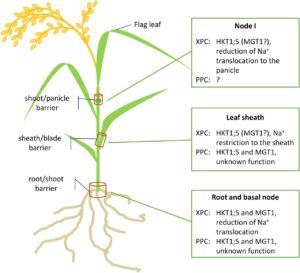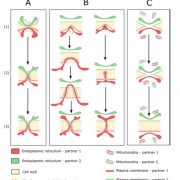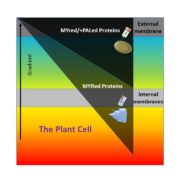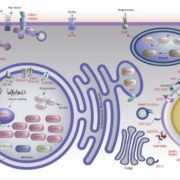Commentary: Salt Tolerance in Crops: Not Only a Matter of Gene Regulation
 Rice (Oryza sativa), the primary source of calories for more than 2 billion people, is the most sensitive of all cereal crops to soil salinity, which affects more than 20% of irrigated arable land (FAO and ITPS, 2015). Rice paddies are mainly located at the delta of rivers, where they can be inundated with saline floods at any developmental stage. Vegetative and reproductive phases are the most affected by high salinity.
Rice (Oryza sativa), the primary source of calories for more than 2 billion people, is the most sensitive of all cereal crops to soil salinity, which affects more than 20% of irrigated arable land (FAO and ITPS, 2015). Rice paddies are mainly located at the delta of rivers, where they can be inundated with saline floods at any developmental stage. Vegetative and reproductive phases are the most affected by high salinity.
Physiological and molecular studies have uncovered ion channels and transporters involved in mineral nutrition that are also key to plant resilience to salinity. These are the gateway for ions that are necessary for cell function but also are linked to ion toxicity, thus acting on two sides of the same coin. The major quantitative trait loci for salt tolerance in cereals encode members of the Trk/HKT superfamily of transporters. These include rice SKC1/HKT1;5, Triticum aestivum Kna1, and Triticum turgidum ssp. durum Nax2 (Mickelbart et al., 2015).
Read more …










Leave a Reply
Want to join the discussion?Feel free to contribute!